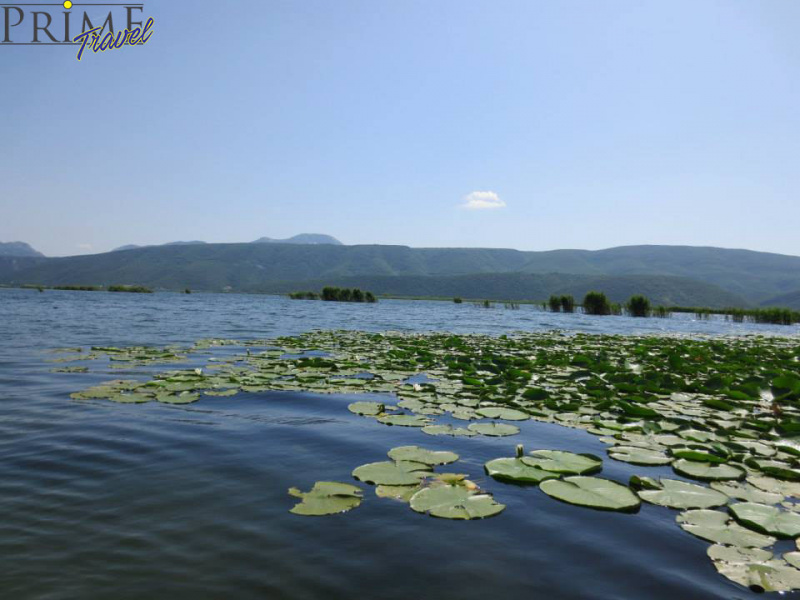
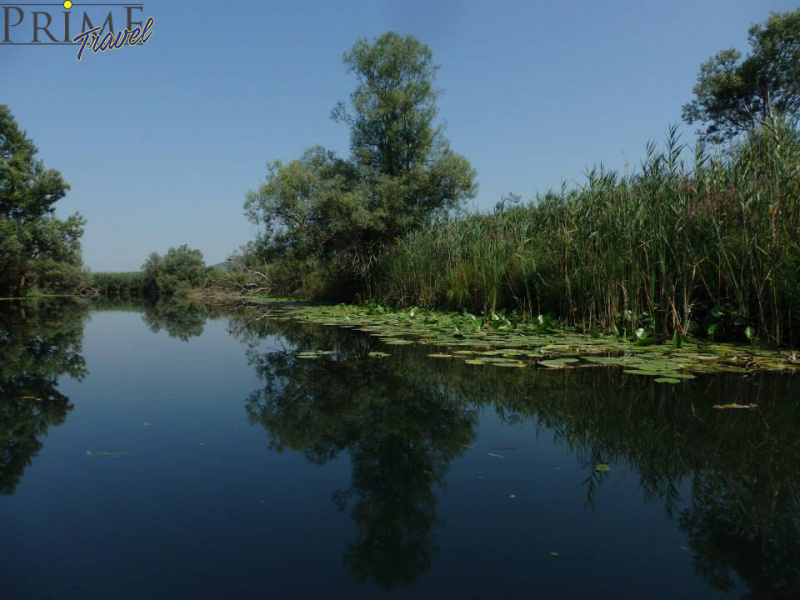
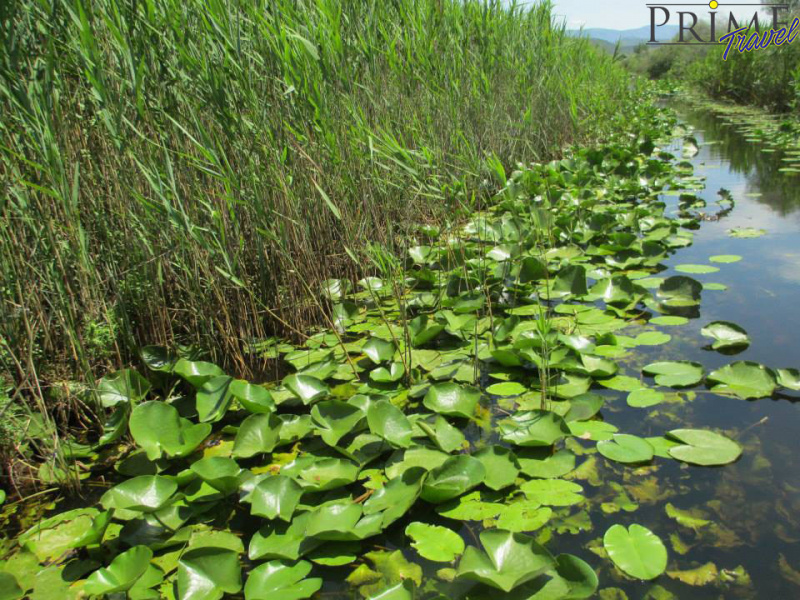
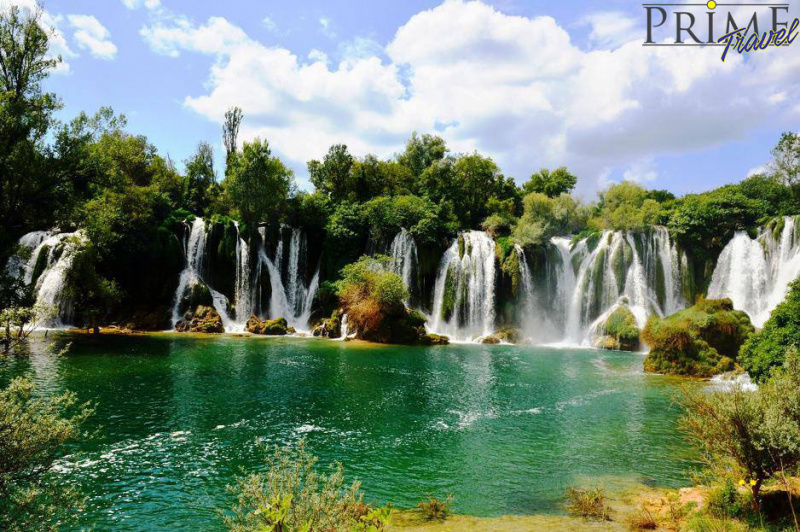
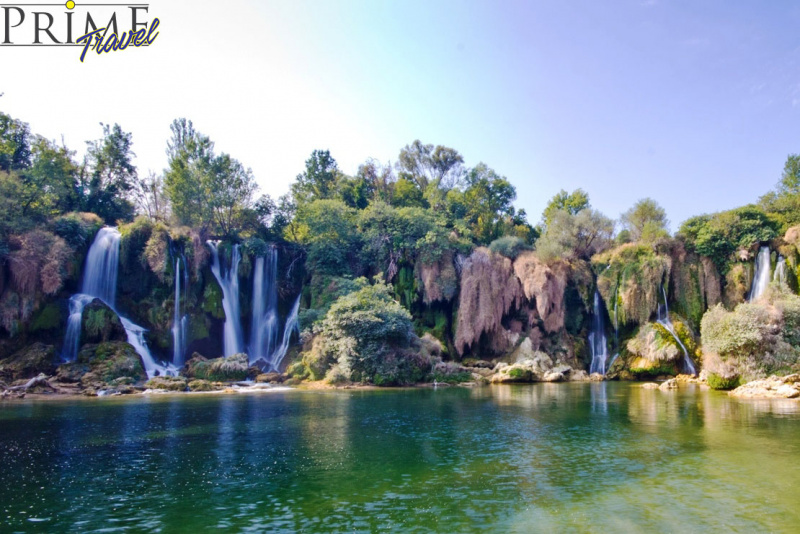
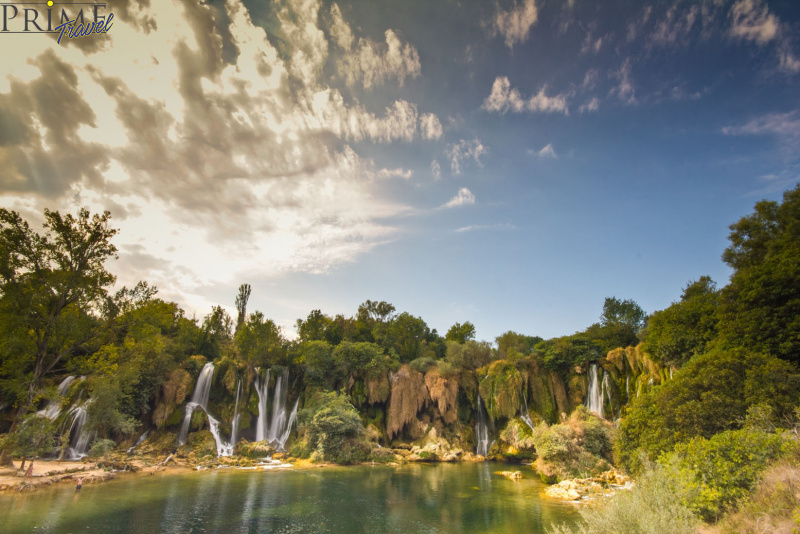
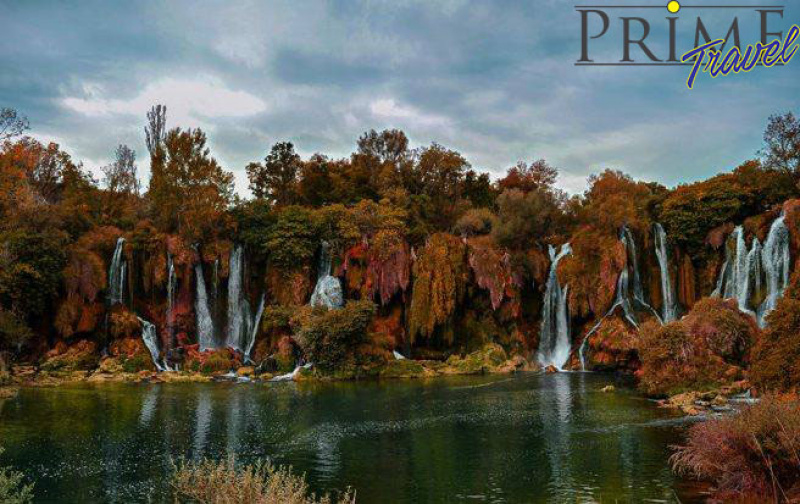
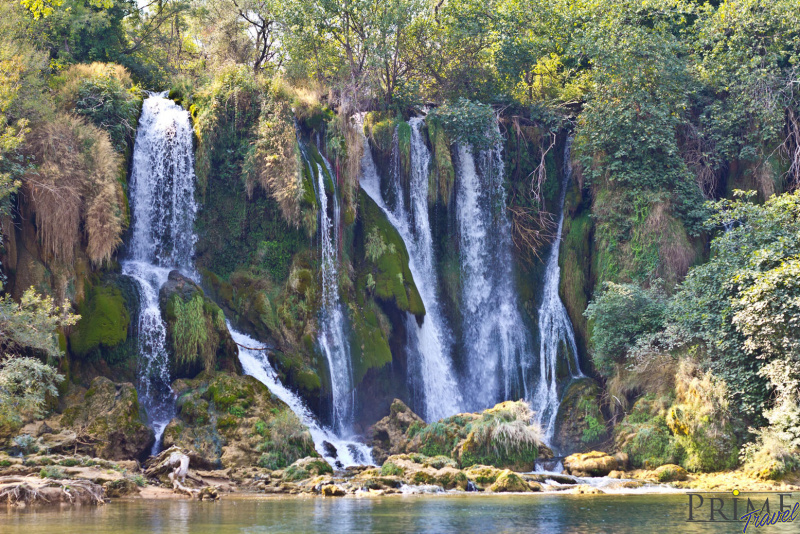
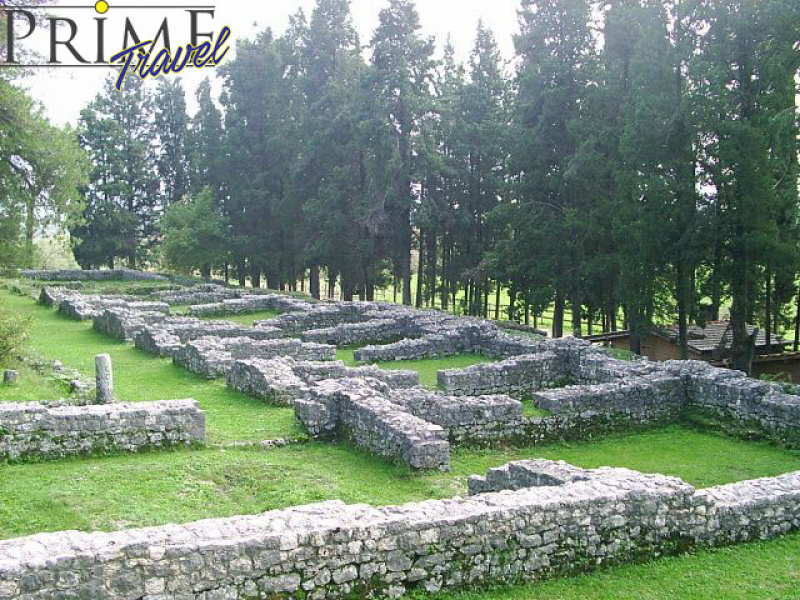
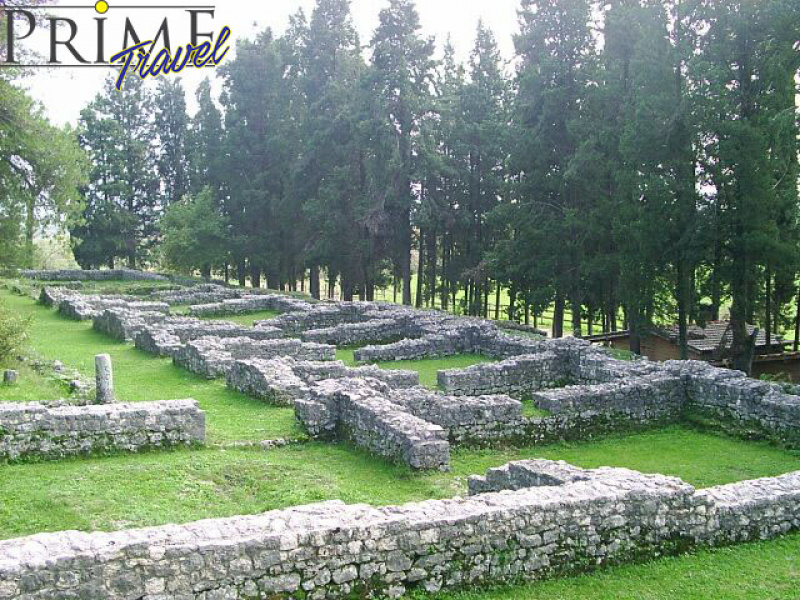
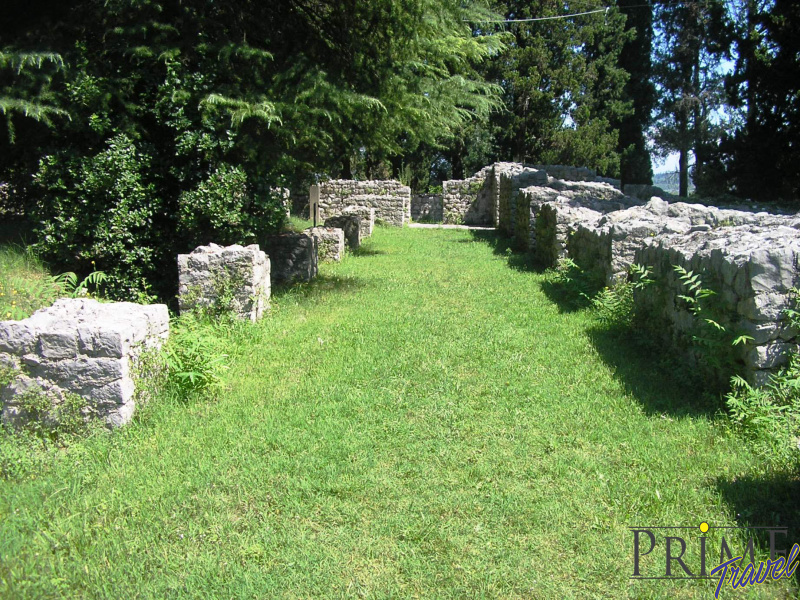
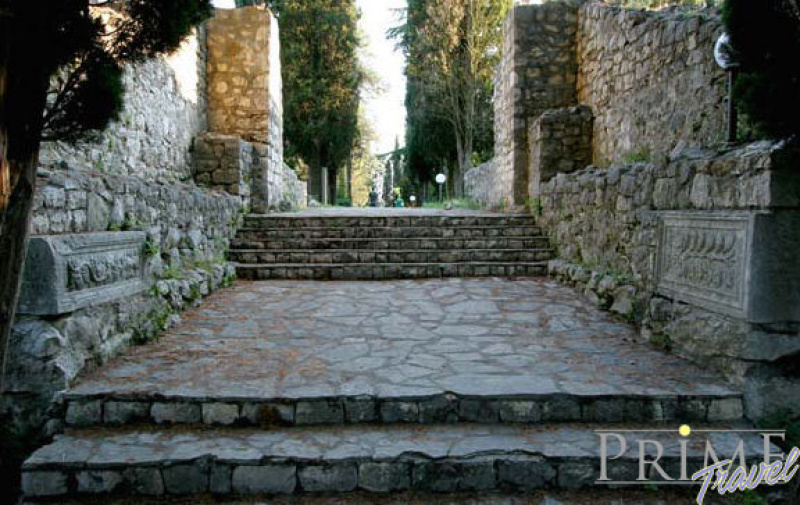
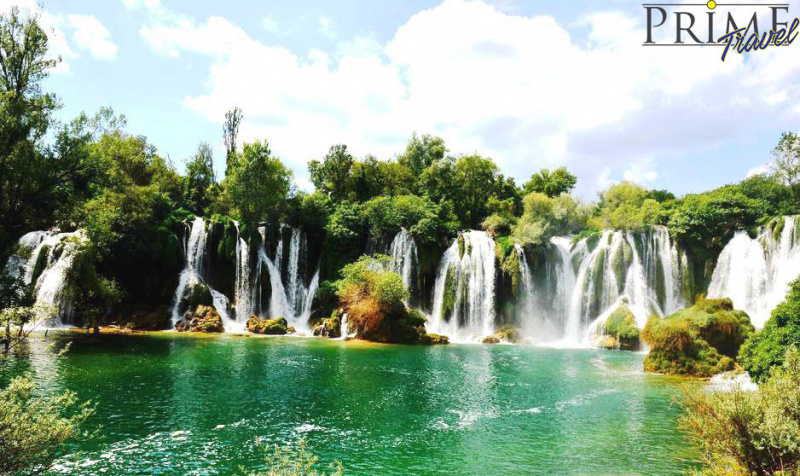
Price: Contact us
The city of Čapljina are interwoven into the Lower Neretva valley. It is surrounded by late antique monuments and Gabela, exotic landscape Struga, ancient stone Počitelj very famous complex of architecture, and Hutovo mud - one of the richest reserves of wading birds in Europe. Čapljina is, it can be said - the darling of water, the city on rivers: Trebižat, Bregava and Krupa. The relief is intersected with different shapes in which bare rocks, rivers, canyons and gorges, waterfalls and gentle landscapes and green Neretva river valley. The Adriatic Sea and Mediterranean climate create the basic climate Čapljina regions that are suitable for growing grapes and Mediterranean fruits and vegetables. Today, and for centuries, Čapljina is desirable place to live.
Sights you can visit in Capljina:
Kravica
Kravica waterfall are located 3 km downstream from Vitaljina in Studenci near Ljubuski. Formed Trebizat river. Height ranges from 26 to 28 m, with a lake below a waterfall diameter of 120 m. Over sedronosnog layer from the bottom to the top of the falls has grown grasses, moss, algae and lichens. Sometimes besides the waterfall many mills and stood for rolling cloth have been active.
Hutovo mud
Nature Park "Hutovo mud" was founded in 1995. It is located in southeastern Herzegovina, on the left side of the Neretva River in the territory of Čapljina and Stolac. It occupies an area of 7411 ha. Public Enterprise Nature Park "Hutovo mud" was founded in 1995. The principal activities of the protection, promotion and use of space for sustainable development. "Hutovo mud" as extremely habitat for many plant and animal species mentioned in ancient times. After the Second World War "Hutovo mud" is not protected solely as an elite hunting ground. Within ornitho-faunal reserve in 1959. set aside the strict bird reserve Škrka, closed for fishing, hunting and other activities. Because of its international importance, "Hutovo mud" in 1971 was included in the "List of Wetlands of International Importance", and in 1980 was included in the "International Project for the protection of Mediterranean wetlands". As a special hunting ground "Hutovo mud" officially exist until 30 March 1995, when its natural declared a natural park. The International Council for Bird Protection (ICBP) included the 1998 "Hutovo mud" in the list of internationally important bird habitats. Then in 2001 the Nature Park "Hutovo mud" inscribed in the List of Wetlands of International. In the south Herzegovina, in a typical karst landscape, on the left side of the Neretva River, is Hutovo Blato, the unique sub-Mediterranean swamp in Europe. It is known from ancient times as a green oasis, with an abundance of water in which the conditions for a large number of plant and animal species. Hutovo Blato is considered one of the largest bird winter ports in Europe. The largest lakes here were: Deransko, meats, Drijen, Walnut, Škrka and Svitava. Svitavsko Lake is an artificial reservoir, created by building hydroelectric power plant Čapljina. Krupa River is the main watercourse Hutovo mud. This is a unique river in Europe, because it runs in both directions. It normally runs from the "source" to the mouth, and from the mouth to the "source". Few places in the world in such a small area with such a large number of species.
Mogorjelo
Mogorjelo is a unique archaeological monument from Roman times, well-preserved ancient Roman villa rustica, located near Čapljina, in the southern part of Bosnia and Herzegovina. This monument is one of the most beautiful examples of late classical architecture in the whole of Bosnia and Herzegovina. National Monument of Bosnia and Herzegovina declared the session held from 5 to 11 November 2002.
Gabela / Troy
Some experts claim that this is an area where there is Troy. Although the theory of Mexican historian Robert Salinas Price's scientific community has never accepted, in his book "Homer blind audience" in 1985. According to this area with its geographical features fit into the ancient story of Troy. His theory further explains in his book "Homer's geographical atlas" in 1992. It states that included Troy Herzegovina and part of Dalmatia and it is the capital actually Daorson, (fort near Stolac), but as her holy city of Ilios said Gabela. 1910 in Gabela lived 1053 inhabitants, and at the site of today's village there was a medieval settlement, which is the second half of the 15th century called the name Drijeva. There are sources that place mentioned in the contract between the great Mayor Nemanja and the Republic of Dubrovnik in 1186. This contract is the first written mention of slumber. Gabela is mentioned under that name in 1399, but the name has stabilized in the XV. century. Ottoman Empire occupied Gabela in 1529, and on the right bank of the Neretva raises fortified defensive system. 1693 Gabela came under the rule of the Venetian Republic. Under the Venetians remained until 1715 when they place blow up, and in 1718 and formally comes back under the rule of the Ottomans.